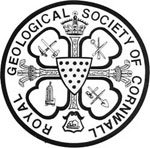Royal Geological Society of Cornwall
 |
|
| Formation | 1814 |
|---|---|
| Type | Scientific society |
| Headquarters | Penzance, Cornwall, United Kingdom |
| Location | |
|
Official language
|
English |
| Website | http://geologycornwall.com/ |
The Royal Geological Society of Cornwall is a geological society based in Penzance, Cornwall in the United Kingdom. It was founded in 1814 to promote the study of the geology of Cornwall, and is the second oldest geological society in the world, after the Geological Society of London which was founded in 1807.
The first President of the society was Davies Gilbert, the first Secretary John Ayrton Paris, and other notable members include Humphry Davy (some of whose papers are held by the Society), and William Gregor, who discovered titanium.
The society's first premises was a house in North Parade, Penzance and in 1853 the Borough of Penzance put forward plans for a new public building on the west side of Penzance. It was planned to have the Borough offices, county court and police station in the east wing, the two floors of the west wing housing the RGSC's museum and a public hall between the two run by a public company. The foundation stone was laid on 27 April 1864 and work was completed by Messr Olver & Sons of Falmouth and opened on 10 September 1867. The building, known as St John's Hall, still exists although the west wing, will in October 2015, be the new Penzance library.
The society awards the Bolitho Medal for notable achievement in geology. The first award was made to Robert Etheridge in 1896. It was awarded in 1948 to Sir Arthur Russell, 6th Baronet.
...
Wikipedia
